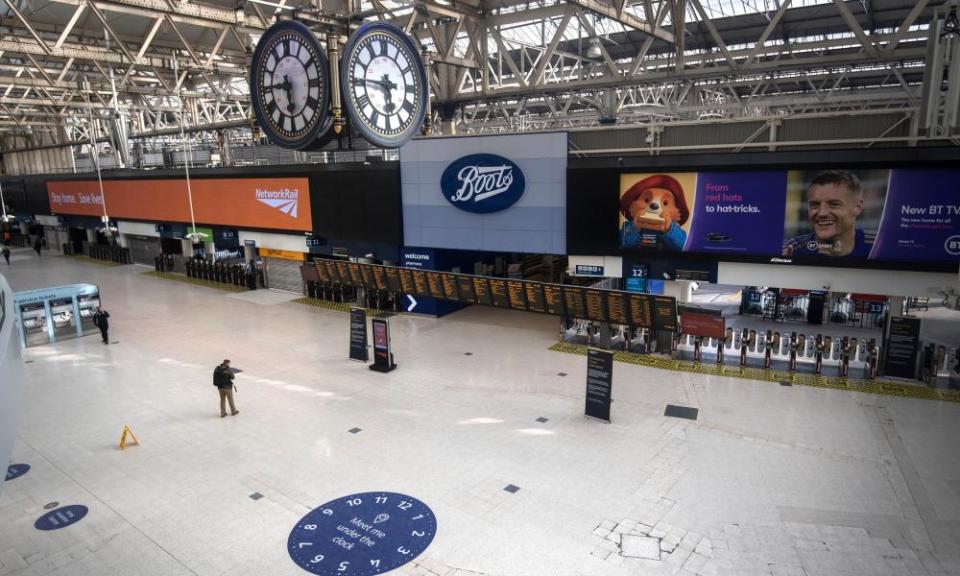UK rail usage fell during lockdown to lowest level since mid-19th century

Passenger journeys on Britain’s railways fell during lockdown to the lowest level since the mid-19th century, according to official figures.
The rail industry regulator said 35m journeys took place from April to June, which was just 8% of the total for the same period in 2019. The Office of Rail and Road (ORR) said revenue had fallen even further than usage, with less than 7% of 2019’s fare income collected over the three months – a shortfall of £2.5bn, which was covered by the taxpayer under emergency contracts.
Passenger numbers climbed steadily to 43% of normal traffic after lockdown ended, and until the government reversed its messaging about returning to the workplace in late September. The latest provisional figures show the levels have dipped again to between 30-40% of usual traffic.
Train operating companies have been urging the government to give a clear message that rail travel is safe.
The ORR’s director of railway planning and performance, Graham Richards, said: “Rail is one of the safest ways to travel and our inspectors continue to monitor the reality on the ground to ensure people have the confidence that they can travel safely.”
The industry is also calling for speedy changes to the fares system, with season ticket sales drying up. The Rail Delivery Group said companies were keen to work with government to introduce flexible season tickets to encourage passengers back.
Meanwhile, ministers have hailed a shift in public attitudes towards more walking and cycling – despite data that suggests the Covid-19 cycling boom may have tailed off.
The Department for Transport highlighted figures in the national travel attitudes survey, which was published on Thursday, that showed 39% of people claimed to walk more than before the pandemic, and 38% saying they cycled more – with 94% of this group saying they were likely to continue to walk and cycle more as a result.
The transport secretary, Grant Shapps, said: “Coronavirus has undoubtedly changed the way we travel and more people walking and cycling will bring environmental and health benefits.
“It’s great that those people who have switched to greener forms of transport want to stick with it and I want to capitalise on this with our unprecedented £2bn active travel fund.”
The £2bn fund was launched in May, with £250m for immediate spending on popup cycle lanes and wider pavements.
Cycling was favoured for safety in terms of contracting coronavirus, according to respondents in the travel attitudes survey, with 82% saying they had no concerns on a bike – the same as in a private car. Only about 10% said they would travel on trains, tubes or trams without worrying about Covid-19.
Alarmingly for public transport operators, only between 14% and 20% said they would have no concerns about using tube or trains again when travel restrictions and physical distancing rules were lifted.
Yet the survey, which was conducted between May and July, also underlined how far cycling lags behind car use. Only 3% of those who travelled to work the previous day had gone by bike, compared with 72% by car.
Further evidence that people’s expressed intentions may not match the daily reality appear in the latest DfT data for actual transport use. Cycling activity had climbed to more than double pre-pandemic levels on several weekdays in May and June, and was almost four times higher at weekends. However, levels of cycling in England have now fallen significantly below 2019 figures on four of the last 10 recorded weekdays.

 Yahoo Sport
Yahoo Sport 





































